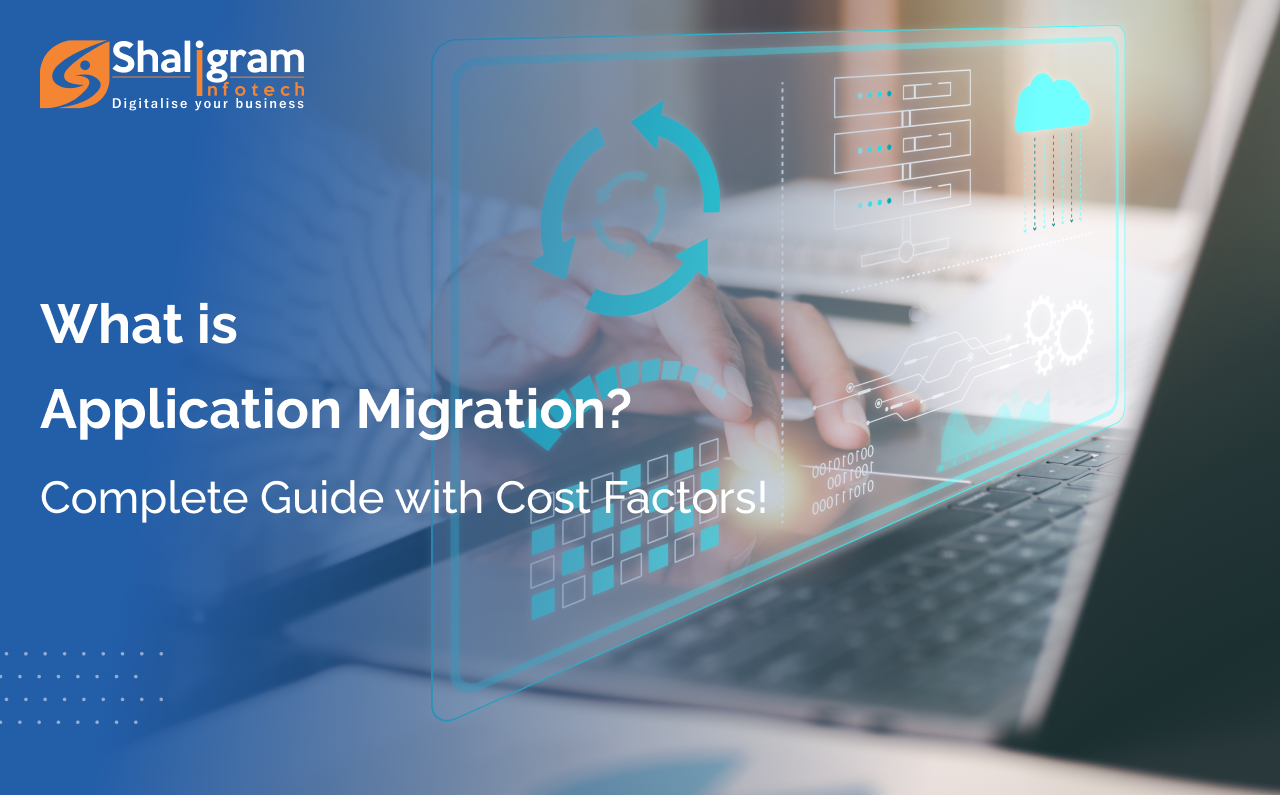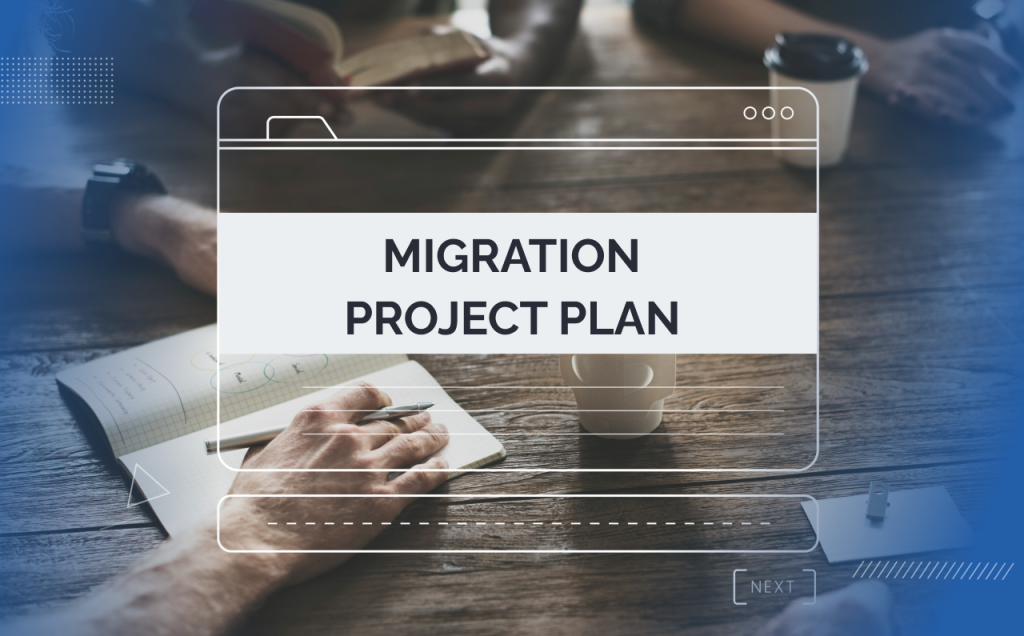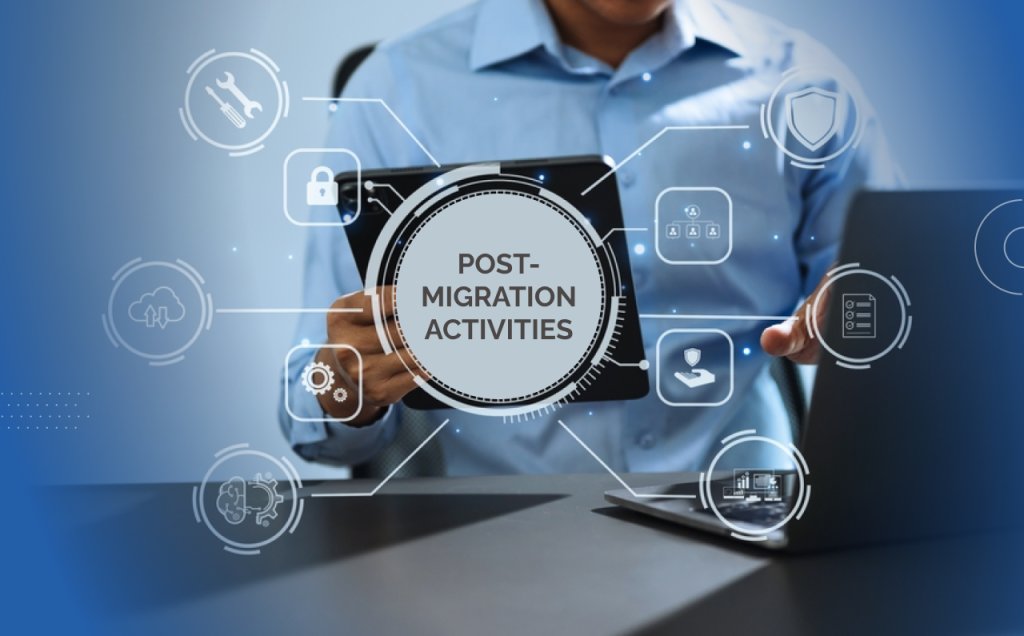- About Us
- Services
Ready to start your dream project?
- Domain Expertise
- Case Study
- Blogs
- Careers
- Contact Us

The process of moving applications among different computing environments is termed application migration. Now these computing environments can include servers, laptops, clouds, scanners, data centers, etc. Compared to migrating applications run on hardware, it is easy to move the ones based on virtual architecture. However, the migration team can face new challenges when moving an application to a new environment.
It is a tough job and requires cross-functional collaboration, communication and patience. Here in this article, we have explained the whole application migration process step by step.
Stages for Application Migration
To manage the process efficiently, it is important to have effective application migration strategies in place. Based on the needs of businesses, different app migration plans will be created by each organization. However, it is important to take care of a few basic things and they are:
Analyzing the background

When you plan to get ahead with the application migration, you need to start by reviewing the toolset you have at hand. You need to conduct a change impact analysis and know the technology stack that you have at hand. The information needs to be collected in terms of migration impact on:
- Infrastructure
- Integrations & plugins
- Performance & scalability
- Compliance & security
- The application
- Business
The bigger the project, the more time will be required to collect such information. The effort and time required to gather this information will affect the overall migration cost.
Before you get any further, there are a few things that you can ask, and they are:
- How big is the planned migration?
- What value will the whole process add to the business?
- How much time and money will it require?
- How much data needs to be moved?
- How can this data be secured?
- What tools and resources do we need to ensure a successful application migration?
- Should we keep the process flow by moving all the apps to the same hosting option?
- How can different systems be integrated?
The next thing you need to do is to convince your stakeholders about the purpose of application migration. You should also explain to all stakeholders what the positive outcome of the process will be. Also try to give some rough estimate of the migration in terms of budget, timelines, dependencies, etc. as it can be important.
Assessment and Planning

Once you have the approval, it is time to collect needed requirements from all stakeholders and end-users, to get a clear picture regarding the involved processes about app performance. Come up with a final document that is acceptable to all parties. Gathering all documents will help the team to know how, what and when of the migration process. Also concentrate on the cost factor to let them know about money they will have to spend on the process.
Coming up with a Migration Project Plan

Now that we have everything, it is time to map the existing functionalities with the collected requirements. You need to be clear about everything before the migration process starts. Moreover, it will help you identify any potential issues and resolve them before things get started.
For successful application migration, you will need a dedicated team, and a cross-functional one would be better. The kind of team you need to set up for your application migration process depends on the complexity of the infrastructure and architecture you have in place. Having skilled people on board is key to ensure that the migration completes as per the expectations.
Based on the required migration goals, you can choose from different types of application migration strategies. Now this can be a full migration, a partial one or a phased one.
Once you are clear about what you want to migrate and who will be doing it, you will be able to come up with a rough timeframe and budget. Keep in mind that the time and cost estimation will depend on your selected migration strategy, the level of customization required, number of users involved, time.
Once all the migration changes are planned, the same can be communicated to the stakeholders and the company. You should also plan the post-migration training before getting ahead.
The Migration Process

The migration process should start by documenting all the features, plugins, and configurations that need to be migrated. At this stage, the focus should be more on ensuring data integrity by getting rid of unnecessary configurations. It is good to create file directories and app backup databases. This should be followed with each migration phase, so that if anything goes wrong, migration can be stopped, and the app can be rolled back.
Once the application is migrated, we should test it to get familiar with its process. We should also consider any downtime and potential issues and fix them as they come up. The application migration should be tested within the test environment to ensure everything works as expected. The migration should be tested for integration, performance and functional perspectives.
Application Launch

Once everything is tested, then it is time to launch the product. The right date should be selected by communicating with all stakeholders. It is always recommended to avoid peak hours as well as any important software updates.
Post-Migration Activities

Migrating the application is not the end. There are a few things that you need to care of once the application is migrated:
- Keep collecting the data to ensure everything works well after the migration.
- Disable the previous application that is no longer in use.
- Keep the test environment created for the migration process as it may be later required for testing changes and customizations.
Conclusion
Application migration is a complex task, and many things can go wrong. To ensure everything goes well, it is important to have a proper plan and a good execution strategy in place. Based on different projects, these things can change. To ensure the migration process is completed on time and within budget, it is important to have clear communication with everyone involved.
At Shaligram Infotech, we have been helping businesses worldwide improve their presence by offering technology-driven solutions. Whether it is about application migration or building a solution from scratch, we offer you the best solution that matches your IT needs by analyzing your business well.






